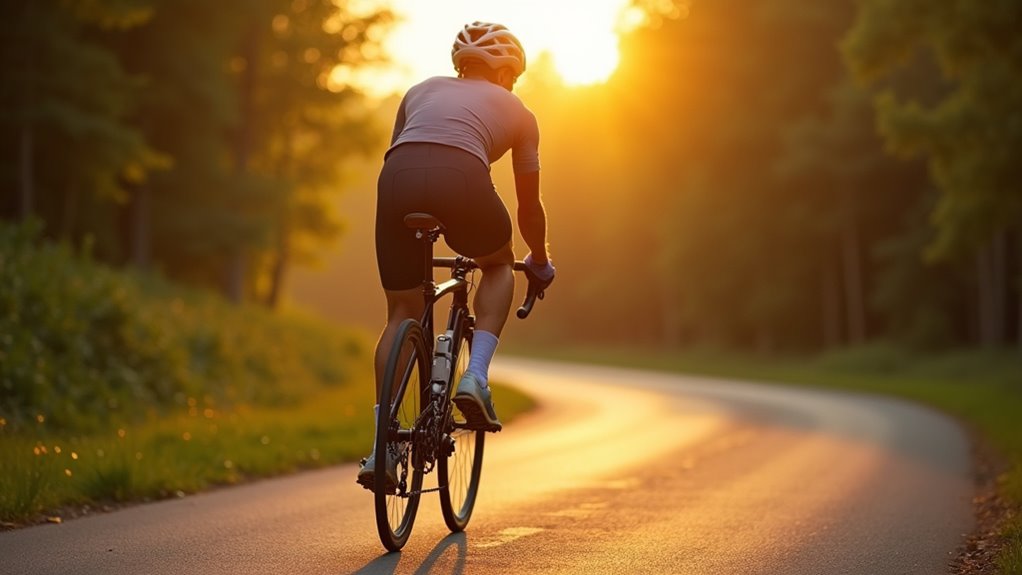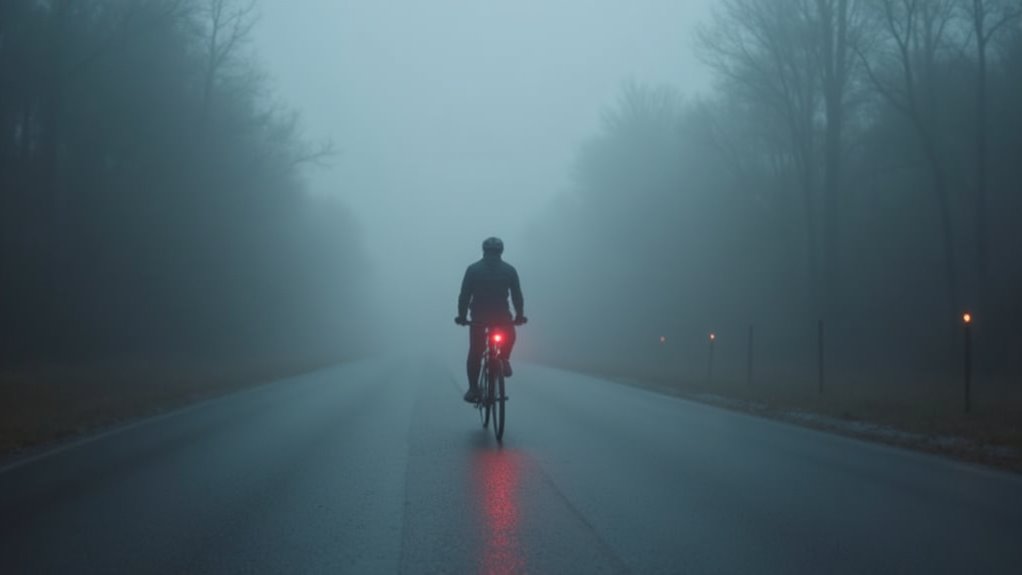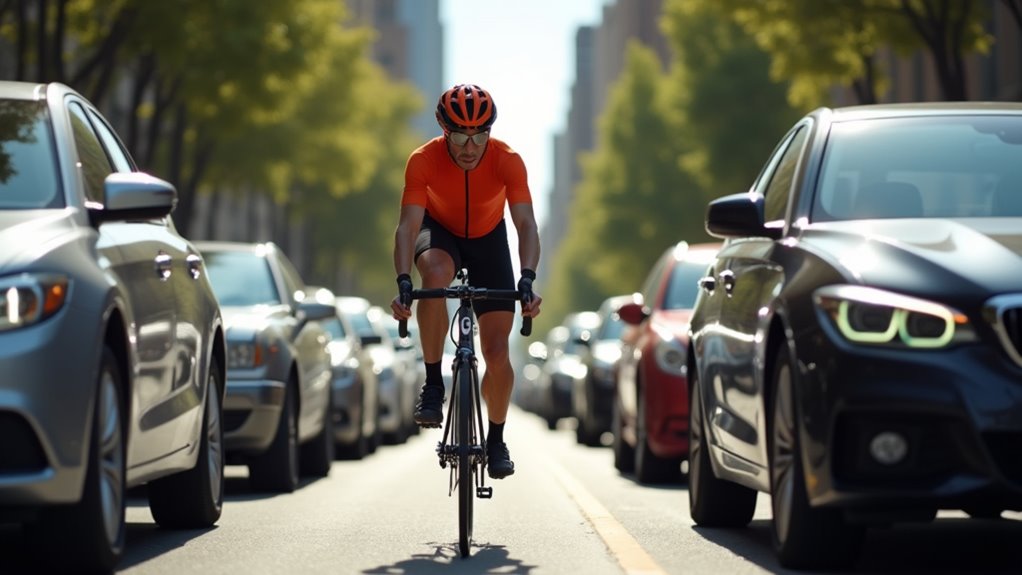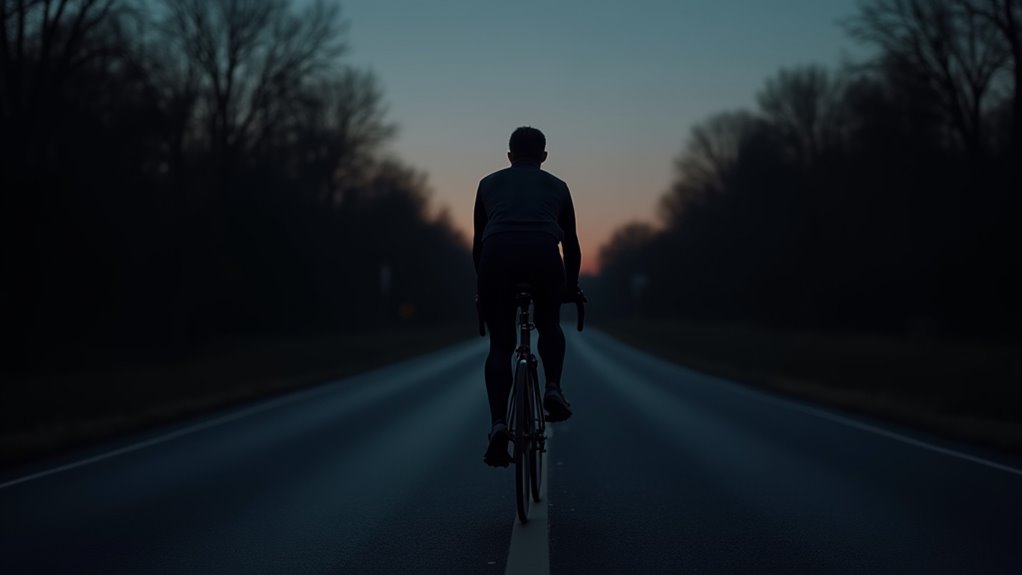Physical Address
304 North Cardinal St.
Dorchester Center, MA 02124
Physical Address
304 North Cardinal St.
Dorchester Center, MA 02124

Uncover the seven hidden biking mistakes that even experienced cyclists make, putting themselves at serious risk without realizing it.
You probably think you’re a safe cyclist, but even experienced riders make dangerous mistakes without realizing it. From helmet mishaps to visibility issues, these seemingly minor oversights can turn your peaceful ride into a serious accident. Whether you’re commuting to work or enjoying a weekend trail, certain habits you’ve developed might be putting you at greater risk than you’d ever imagine. Here’s what you need to know about the seven most critical errors that could compromise your safety.

When you’re enthusiastic to hit the road or trail, it’s tempting to grab any helmet and go—but wearing an ill-fitting helmet is almost as dangerous as riding without one. A loose helmet can shift during impact, leaving critical areas unprotected.
Too tight, and you’ll experience painful pressure points that distract from safe riding.
Check the fit by ensuring the helmet sits level on your head, covering your forehead about an inch above your eyebrows. The side straps should form a “V” under each ear, and you shouldn’t be able to fit more than two fingers between the chin strap and your jaw.
When you shake your head, the helmet shouldn’t move independently.
Replace helmets every five years or after any significant impact.
Just as safety preparation is crucial for camping adventures with pets, proper helmet fitting requires the same attention to detail before every ride.
While proper helmet fit protects your head during accidents, following traffic laws helps prevent those accidents from happening in the first place. You’re not exempt from stop signs, red lights, or yield signs just because you’re on a bike. Running these signals puts you directly in harm’s way and creates dangerous situations for drivers who aren’t expecting you.
Always ride in the same direction as traffic, not against it. Use bike lanes when available, and signal your turns clearly with hand gestures. Don’t weave between parked cars or dart across intersections without looking. These reckless behaviors make you unpredictable to motorists.
Consider planning safer routes through areas where family camping activities occur, as these locations often have designated bike paths and reduced vehicle traffic that can provide a more secure riding environment.

One of the deadliest mistakes cyclists make is riding without lights during dawn, dusk, or nighttime hours. You’re essentially invisible to drivers, pedestrians, and other cyclists when you don’t have proper lighting equipment. This dramatically increases your risk of accidents and collisions.
Riding without proper lighting makes you invisible to others and dramatically increases your collision risk during low-light conditions.
Poor visibility conditions require specific safety measures:
Don’t rely on street lighting alone. Even well-lit areas have shadows and blind spots. Your lights aren’t just for seeing—they’re for being seen. Many outdoor enthusiasts who enjoy rock climbing also appreciate cycling as another adventurous way to explore camping destinations safely.
Just as you wouldn’t drive a car without checking your brakes, you shouldn’t ride a bike without regular maintenance checks. Mechanical failures can cause serious accidents, especially when you’re traveling at speed or maneuvering traffic.
Check your brakes weekly by squeezing the levers and ensuring they engage smoothly.
Inspect your tires for proper inflation, wear, and embedded debris that could cause blowouts.
Test your chain by shifting through all gears – it should move smoothly without skipping or grinding.
Don’t ignore warning signs like squeaking brakes, wobbly wheels, or loose handlebars. These problems worsen quickly and can lead to catastrophic failures.
Schedule professional tune-ups every six months, but perform basic safety checks before every ride.
A few minutes of prevention beats hours in the emergency room.
Weather conditions also play a crucial role in bike safety, as rainy weather creates additional hazards like reduced visibility and slippery surfaces that require extra preparation and caution.

Even with a perfectly maintained bike, you can still find yourself in serious trouble if you ride too close to parked cars. Getting “doored” – when someone opens a car door directly into your path – is one of the most common and dangerous cycling accidents. You’ll have zero time to react when that door swings open unexpectedly.
Getting doored gives cyclists zero reaction time and ranks among the most common yet preventable cycling accidents on city streets.
Stay safe by following these essential guidelines:
Just as outdoor enthusiasts use bug repellent to create a protective barrier while camping, maintaining proper distance from parked cars creates your safety buffer while cycling.
While cycling might seem like the perfect time to catch up on calls or pump yourself up with music, using your phone or wearing headphones creates a dangerous sensory bubble that cuts you off from critical safety cues.
You won’t hear car engines, honking horns, emergency vehicles, or other cyclists approaching from behind. Your reaction time plummets when you’re distracted by conversations or loud music.
Handling your phone while riding means taking your hands off the handlebars and your eyes off the road – a recipe for disaster.
If you must listen to music, use bone-conduction headphones that don’t block your ears, or keep one earbud out. Save phone calls for when you’re stopped.
Your playlist isn’t worth your life, and that text can wait until you reach your destination safely.
The same principle applies to motorcycle camping where staying alert to your surroundings is crucial for maintaining safety throughout your journey.

When darkness falls or weather conditions reduce visibility, your clothing choices become a critical safety factor that many cyclists dangerously overlook. Wearing all black or dark colors makes you nearly invisible to drivers, especially during dawn, dusk, or overcast conditions.
You’re fundamentally gambling with your life when you blend into the background. Drivers can’t avoid what they can’t see, and by the time headlights illuminate dark clothing, it’s often too late for safe reaction times.
Invisible cyclists become statistics—drivers need time to react, and dark clothing eliminates that crucial window of safety.
Make yourself visible with these essential gear choices:
Stay safe by sidestepping these seven serious cycling slip-ups. You’ll dramatically decrease danger by donning a properly fitted helmet, following traffic rules religiously, and boosting your visibility with bright clothing and blazing lights. Remember to regularly check your bike’s condition, keep cautious clearance from parked cars, and ditch distracting devices like phones. By being mindful of these mistakes, you’re maximizing your protection and minimizing mishaps on every ride you take.